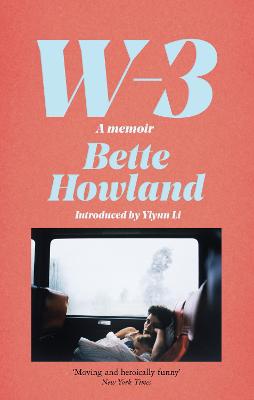W-3: A Memoir
Bette Howland
(Picador, 2021) pbk, £14.99
Originally published in 1974, this is an account by the author of the time she spent as an inpatient in a psychiatric ward of a hospital in Chicago, having taken a life-threatening overdose. It piqued the interest of Brigid Hughes, editor of Public Space magazine, who came across it while browsing in a second-hand Manhattan bookstore and has been re-released. Hughes’ mission is ‘to seek out overlooked and unclassifiable work, and to publish writing from beyond established confines.’ W-3 and its author had both fallen into obscurity and both remain hard to place, re-appearing now as part of a broader story of literary endeavour and obstacle.
The book opens with Howland lying in the intensive care unit, ‘having pretty quickly regretted what I had done and called the doctor’. She finds she is temporarily voiceless, an effect of the life-saving treatments she has been through, but also flagging a conflictual relationship with what she wants to say, as writer, as person. Through her mother’s visit we learn of difficult relations: ‘I have always been an embarrassment. And our family life had always seemed to consist mainly of stratagems, concealments — how to cover up a series of scandalous facts….. a scarlet fallen woman’.
The main part of the text from thereon is a retrospective description of her fellow inpatients. Rather than giving the more expected details or analysis of her own personal context Howland instead gives the view as participant-observer, looking from within her own state of breakdown though not recognised as such at the time.
Howland understood early in her admission that her own story was not unique, hers was just another precarious existence in the city. Like all the other patients who had crossed the threshold, the one dividing them and ‘real life’, initially she believes she is different, that she does not belong there. That she says, ‘was the normal reaction….’ anything to deny this grim, inert collective state, and the fact that everyone looked essentially the same —peculiar.’ Her descriptions of the minutiae of ward life are wry and accurate; the awful meals, the annoying eating behaviour, the pervasive drug interventions, the ‘illusion of community’, the pecking order and relationships of patients to each other and to staff, all of which combine in the gradual insight that ‘the patients existed for the sake of the hospital not the other way round.’
The narrative of ward life is unremitting and will not be for everyone. The book came out roughly ten years after Sylvia Plath’s The Bell Jar, the latter a metaphor for the poet’s own struggles with depression, at a time when Howland was trying to establish herself as a writer and issues of mental health were not publicly addressed. Saul Bellow a fellow Chicagoan and prominent member of the overwhelmingly male literati, recognised her talent. The fact he had written an accolade on the back cover of the original W-3 helped to catch Hughes’ attention. Bellow had been a lover as well as mentor to Howland; the near lethal overdose which resulted in her admission was taken in Bellow’s apartment after the relationship ended. She was from a working- class Jewish background, a divorcee and single mother of two small sons, struggling financially at a time when female writers faced significant barriers. Blue Chicago, another of Howland’s publication successes describes how it felt to live in the breaking down and violent inner-city life there in the 1970s.
Despite winning prestigious awards for this and her other two published works of the time, Howland disappeared from the literary scene. Perhaps she gives a clue, if not any platitudes or reassurance, at the end of the book. She is back home and finds her small son crying, scared in case she will get sick again. ‘Oh dear heart’, she says, ‘I was just worrying about the same thing’.
Bernadette Ashby


Leave a Reply